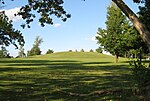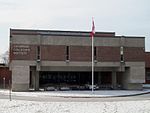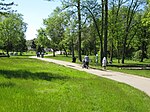Bendale

Bendale, also called Cedarbrae and Midland Park, is a residential neighbourhood in the eastern part of Toronto, Ontario, Canada. It is located in the former suburb of Scarborough. It is centred on the intersection of Lawrence Avenue East and Brimley Road. Its boundaries, as defined by the City, are Midland Avenue from Lawrence, north to Highway 401, east to McCowan, south to Lawrence, east to West Highland Creek, south-west along West Highland Creek, then follow several side streets parallel to the Creek, north to Midland Avenue. The area north of Ellesmere is typically considered the Scarborough City Centre district, and is not considered in this neighbourhood article. Bendale was shortened from the original name Benlomond in 1881, which was named for Ben Lomond.
Excerpt from the Wikipedia article Bendale (License: CC BY-SA 3.0, Authors, Images).Bendale
Benshire Drive, Toronto Scarborough
Geographical coordinates (GPS) Address Nearby Places Show on map
Geographical coordinates (GPS)
| Latitude | Longitude |
|---|---|
| N 43.76 ° | E -79.24 ° |
Address
Benshire Drive 5
M1H 1A4 Toronto, Scarborough
Ontario, Canada
Open on Google Maps








